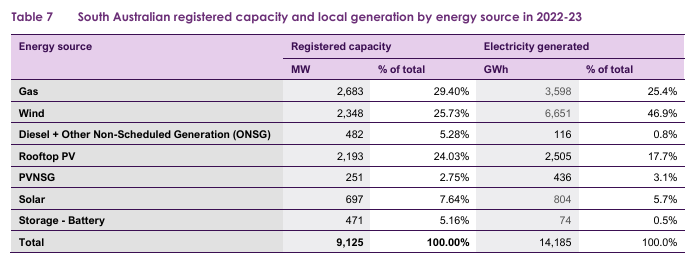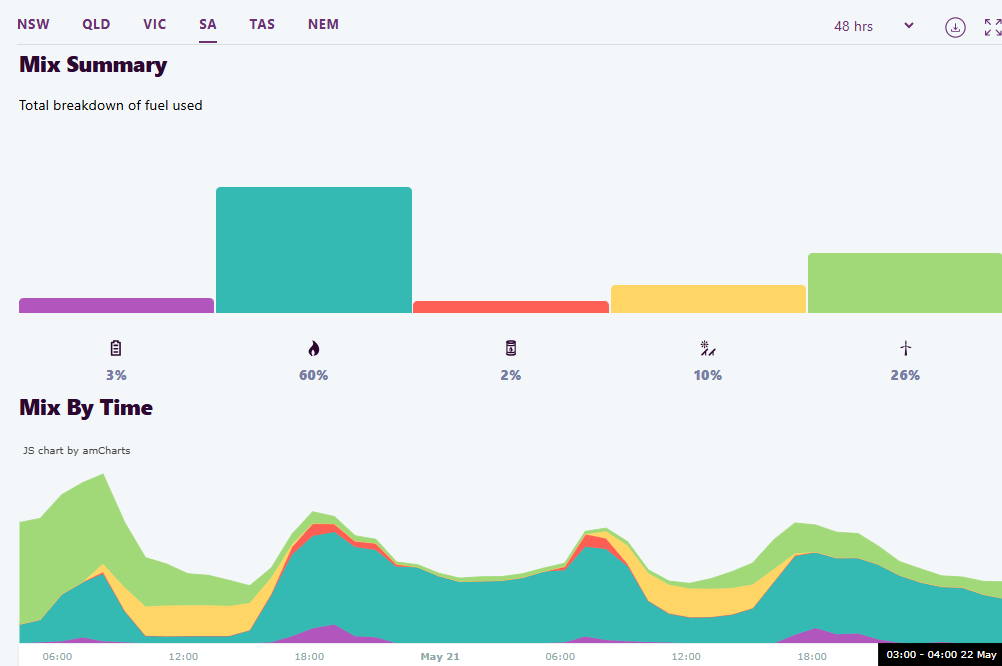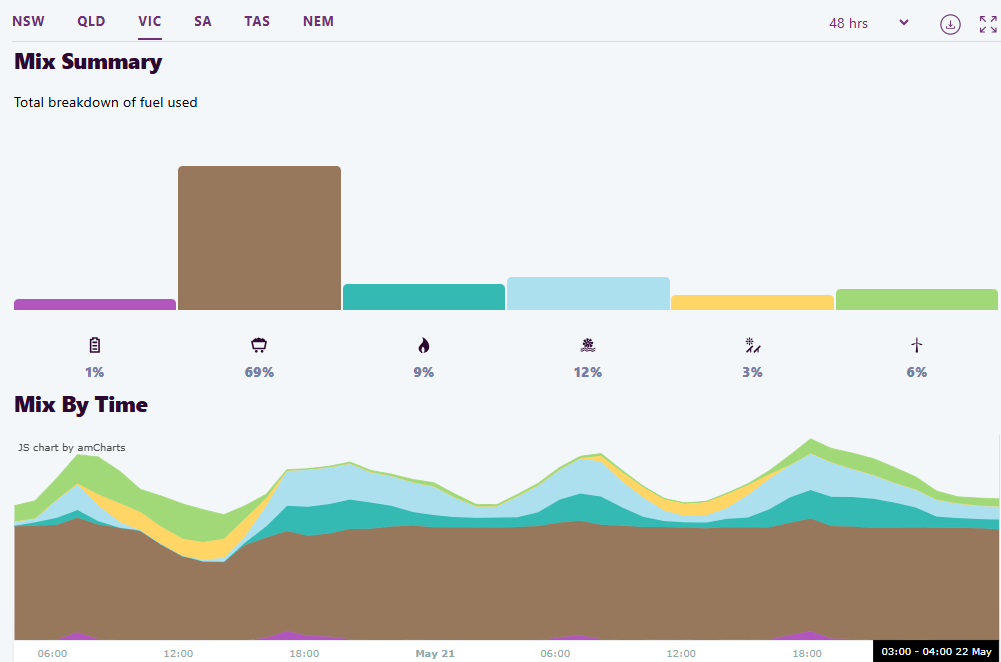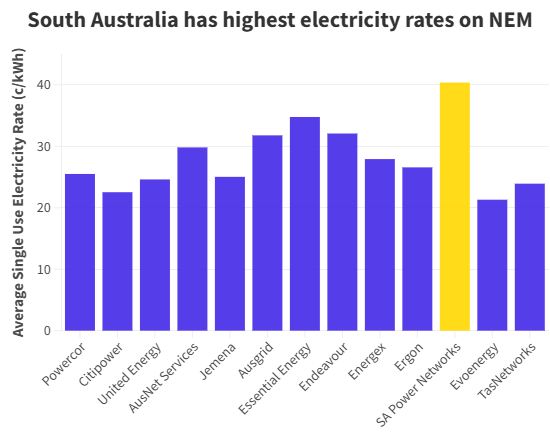I keep arguing that Australia’s transition to renewable energy will be incredibly expensive and drive up power bills.
The reasons are straightforward. Renewable energy sources depend on weather conditions, which makes them intermittent and results in low load factors. As a result, renewables require backup hydrocarbon generation and loads of storage. They also need a lot more network infrastructure to connect the dispersed web of generation sources.
The intermittency of renewable energy is especially acute in winter when solar generation is low and there are often long periods of low wind.
To illustrate, consider 21 to 22 May, when wind generation collapsed in South Australia and Victoria, resulting in these states becoming overly dependent on hydrocarbon generation (i.e., coal, gas and diesel).
As noted yesterday, South Australia is touted as the Australian mainland’s renewables champion, with more than 70% of its energy coming from renewable sources (wind and solar) in 2022-23:

Source: AEMO
Between 21 and 22 May, wind generation in South Australia collapsed, whereas solar generation is always low this time of year, resulting in 60% of South Australia’s electricity coming from gas and 2% from diesel in the 48 hour period:

South Australia’s electricity generation (21-22 May 2025)
South Australia also imports energy from Victoria, which experienced a similar collapse in wind and solar generation and was overwhelmingly reliant on brown coal (69%) and gas (9%) to meet its electricity needs:

Victoria’s electricity generation (21-22 May 2025)
South Australia has set a target for 100% net renewable energy by 2027, which would require shutting down the state’s gas-fired and diesel generators.
The obvious question is: where will South Australia’s electricity come from in times of low wind and sun? And how much will it cost?
South Australia already has the most expensive electricity in the nation:

Source: Energyse
South Australia has followed the global trend whereby the higher the share of renewables in an energy system, the higher the electricity cost:

I have recently explained the exorbitant costs involved in energy storage and transmission pertaining to renewables.
Consider the Snowy Hydro 2.0 pumped hydro project, which will use excess renewable energy generated during the day (mostly from solar) to pump water up to an elevated reservoir, which will then be released at night to generate hydroelectricity when there is no solar generating.
The cost of the Snowy Hydro 2.0 has skyrocketed. The former Coalition government under Malcolm Turnbull announced that the project would cost $2 billion and be completed by 2021. The government increased the cost to $6 billion, then $12 billion.
Problems continue to plague the Snowy Hydro 2.0 project, which is still under construction and a long way from completion.
Underground development was halted in February 2025 when an industrial-sized ventilation fan failed, spewing shrapnel into the air.
Workers on the project have gone on strike demanding a pay raise of more than 30% over four years, plus a superannuation contribution of 15% and a range of other benefits.
The sky is the limit for how much Snowy Hydro will ultimately cost.
To add insult to injury, Snowy Hydro 2.0 will be connected to the 365-kilometer HumeLink in south-west New South Wales. This ‘green’ project is also behind schedule, and the cost estimate has grown to almost $5 billion.
The estimated cost of the 2,000-megawatt QLD Borumba Pumped Hydro project has also soared by $4.2 billion to $18.4 billion, and it will not be completed until 2033 at the earliest. The costs will undoubtedly increase further.
Snowy Hydro 2.0 and Borumba are microcosms of the enormous costs of the renewable ‘revolution’.
Pumped hydro projects do not generate any net electricity. They simply serve as storage vehicles for excess renewable production (mainly solar) during the middle of the day. Battery storage and the dispersed web of solar and wind generators scattered across the countryside are equally expensive.
Indeed, new estimates from the Australian Energy Market Operator (AEMO) show that the cost of overhead transmission line projects increased by 25% to 55% in real terms in 2025 versus those in the 2023 update. Costs were also 10% to 35% higher (in real terms) for substation projects.

AEMO warned that these costs will inevitably be reflected in households’ electricity bills. Australian consumers are already facing an increase of up to 9% in power bills from 1 July 2025.
The reality is that weather-dependent energy is inherently unreliable energy. It is also incredibly costly due to the massive buildout, transmission, and storage needed and the requirement to keep hydrocarbon generators on standby when wind and solar generation collapse.
The cost of constructing each renewable project raises the regulatory asset base and, ultimately, retail electricity costs.
Therefore, consumers will pay higher energy costs directly through their bills, as well as through their taxes to support renewable energy subsidies.
Policymakers should stop gaslighting and be upfront about the costs and trade-offs in Australia’s renewable energy transition.

